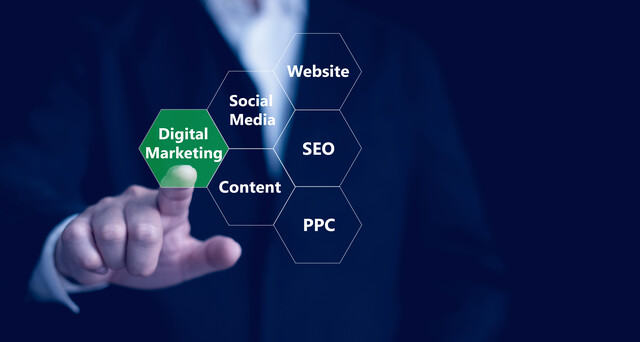When it comes to writing, the presentation is almost as important, if not more so, as the content itself. Business documents are created for a purpose. The writer wants a certain action undertaken, so business writing is always action-oriented.
If you do not format and present your information well, that hard-hitting message will get lost in a sea of words. In this article, we look at the miracle known as formatting, which helps any professional or non-professional get the message across to the targeted reader.
Once you have the purpose and the reader profile developed, the next step would be to organize your thoughts and ideas. Good organization is a key component for delivering a message succinctly and professionally. Remember: When writing in a business environment, you are writing to another professional who takes time out from his or her busy schedule to read your document. Structure your writing in such a way that the reader does not have to try too hard to search for the message.
Here are a few questions to keep in mind:
-
Does your document have a logical progression of ideas?
-
Have you put your reader's interest first in the document?
-
Is your document organized with similar information in the same place?
-
How many paragraphs do you have?
-
Are your paragraphs based on the same idea?
Once you have successfully answered these questions, it is time to take a look at the basics of formatting and organizing when it comes to business documents. There is a pattern that most business documents, including memorandums, e-mails, proposals, etc., need to follow.
Here are some of the components:
Tackling the introduction: The introduction is one of the most important parts of your business document. It can make or break the success of a document. Remember, if your reader is hooked by the ideas expressed in the introduction itself, he or she will definitely read on. A good introduction sets up the expectation of what is to follow in the document.
A good introduction can do the following:
Want to learn more? Take an online course in Business Writing.
-
build the reader's interest;
-
explain what the purpose of the document is;
-
provide an insight into what is to follow in the document.
Here are some suggestions to achieve this aim:
You can relate the document to an existing context, for example: "This is with regards to the discussion we had yesterday."
Come clean with the purpose; for example, "Requesting information on your latest product."
Put down in the very beginning what the document will cover in the following paragraphs; for example, "This document will cover a) the benefits of RO-filtered water b) the dangers of having unfiltered water."
Paragraphs: Breaking content into paragraphs is one of the best ways to organize your business document. It helps you break down important information and makes it easily accessible to the reader, apart from adding a professional and presentable visual appeal to your document.
Follow these rules for correct use of paragraphs: Use short paragraphs in your document. A large block of information can be intimidating and can put readers off from reading the document.
Every paragraph should be dedicated to providing information about a certain idea.
If you need to introduce a new idea in your document, do so with a new paragraph.
A paragraph should be, at the most, seven lines of typed text to help keep the reader glued to your document.
Every paragraph should be complete in itself and should make sense to a reader if read in isolation.
Using blank space: Blank spaces are an important element in a business document. They prove to be very useful in keeping the appearance of a document neat and presentable.
-
Blank spaces make a document easier to read.
-
If the text is too cluttered in its appearance, it can put off the reader.
-
Always keep the blank space clean and free of fancy borders and logos.
-
Blank spaces between paragraphs are a good idea as well because they add to the overall neatness of a business document, making it easier to read.
-
Margins in a document should be at least an inch wide.
-
Leave space at the top and bottom of your page to accommodate headers and footers and to avoid crowding.
Other formatting:
-
All business documents should be strictly written on one side of the page only, whether typed or handwritten.
-
Number all the pages in your document; this makes for easy reference for the reader.
-
Use highlighting to make an important point or idea stand out from the crowd. There are various ways in which you can highlight any text.
-
Using bold typeface is the most common way of highlighting any part of a document. Bold typeface is an instant eye-catcher, and it makes any highlighted text immediately accessible to the reader. However, one should not overdo the use of bold highlighting, as it can make the document look unbalanced.
-
Italics also are used as a means of highlighting text in a document. Mostly italics are used to highlight unfamiliar or foreign words in a document; they also are used for emphasizing a certain point. For example, "I just have to buy this dress!"
-
Italics often are used to make straight quotations from a source; for example, if you were using a famous person's quote in your document, you would italicize it.
-
Make your document visually appealing by including tables and graphs where necessary. You might also like to play around with the visual appeal of the document by strategically italicizing or bolding certain paragraphs or ideas.
-
Bullets and numbering also play an important role in business document formatting. They draw a reader's attention to important facts and ideas, as well as lend a neat appearance to a business document.
Conclusion or end of a business document: The end or conclusion of a business document is every bit as important as the introduction. You will want to state again the main elements you used in your opening statements. This is the last thing your reader will see, and you want to be sure it is your main message. If your document is very short, you do not need to reinstate the ideas discussed earlier. Instead, you can suggest recommendations and action plans or even put forth a suggested action step or request feedback.
If you follow these formatting tips, you are well on your way to producing successful documents.































